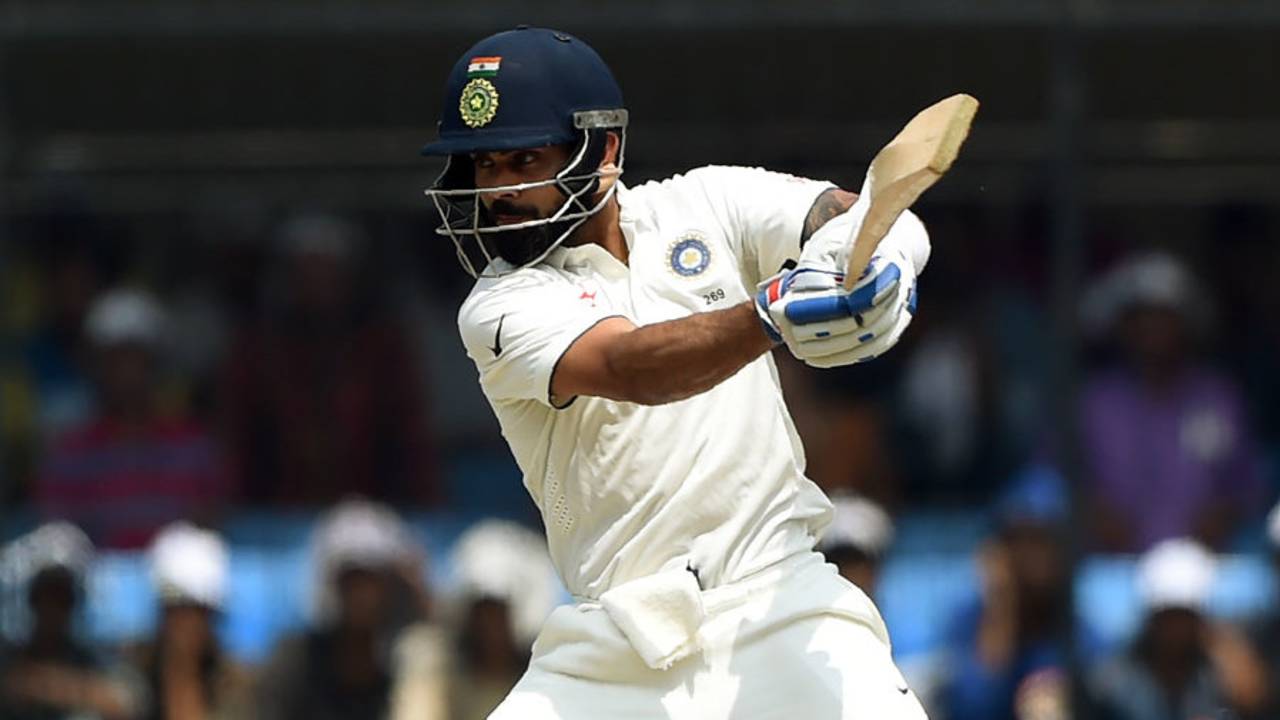The second-day pitch in Indore has shown very little signs of wear and tear. The small cracks that are running all the way through have neither widened nor have the edges loosened up. Even the fast bowlers' footmarks are just that - footmarks. The top soil has not disintegrated much either and the signs are visible for the third day to be the best day for batting in this Test.
Make the bowlers bowl to you
They say the best batsmen make bowlers bowl where they want them to. It's good to hear and profess, but is it even possible? Virat Kohli showed how it's done, in the 92nd over bowled by Matt Henry. The third ball of the over was was outside off and Kohli did not offer a shot. The same sequence repeated on the next ball - outside off and left alone. Henry was forced to rethink his strategy for the fifth ball and he bowled a little closer to Kohli who then closed the face of the bat with a forward lean and collected an easy single through the midwicket region.
Why is it tough to play the short ball in India?
The two key ingredients while playing the short ball are bounce and pace. Life becomes a lot easier for the batsman if he could trust both of them, for that allows him to make a clear strategy. You could either decide to duck, sway or ride the bounce while defending. On the attacking front also, you could commit to the pull or hook early. In any case, the pull or hook is an instinctive shot and demands an early commitment. On Indian pitches, you can neither trust the bounce nor the pace and that is why it's a little tough to formulate one strategy for all the bouncers bowled to you.
There are a lot of theories about how to play spin. Some say one must always use his feet to go down the pitch, others would tell you sweeping is a must too. Both Kohli and Ajinkya Rahane have dominated spin in this game but have followed different strategies. Rahane has stepped down the pitch regularly and has chosen to take the aerial route. On the other hand, Kohli has used a long forward stride and the depth of the crease. Rahane struck four sixes and Kohli none but their strike-rate against spin was almost identical.
Maintaining shape while taking the aerial route
Rahane has used his feet quite well to both the New Zealand spinners. In his pursuit to go aerial, he has followed a couple of fundamentals of hitting the long ball. He has always gone with the spin and stepped out accordingly to get in the right position. Against Mitchell Santner he stepped away from the line to go inside out, but stepped across against Jeevan Patel to target the leg side. In addition to his footwork, he formed a stable base while going in the air. It is imperative to maintain a stable base and then the shape while and after hitting the ball. Rahane has showed that hitting sixes for a man of small stature is possible if the basics are addressed every time you stepped out.

